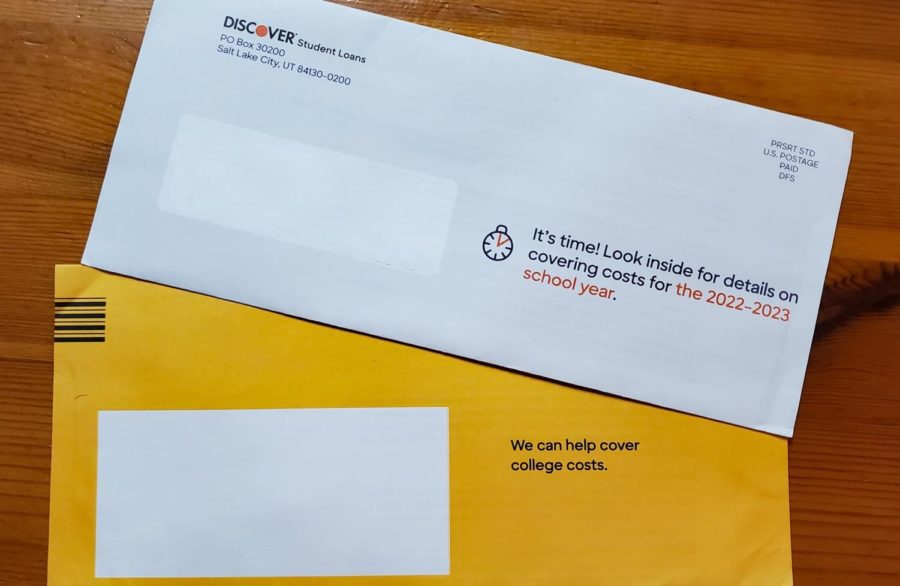CUH Students Unsure if Student Loan Relief is Enough
Companies and banks like Discover send out loan information via mail to students.
Student debt is a significant issue facing the country. According to the federal reserve, Americans owe $1.75 trillion in student debt.
In October, the Biden administration released an application for student loan debt relief. If approved, the relief would relieve $10,000 for students earning less than $125,000 annually or $250,000 per household. Pell grant recipients who apply and meet the annual income requirements will receive up to $20,000; some believe this solution is only the first step in addressing a much bigger issue.
Joe Knapp, a senior English major, has no college loans due to his education being paid for by the military, but has family members who have student loans and filled out the relief application.
“I don’t know if the problem’s fixed just from giving $10,000 or $20,000,” Knapp said. “Like my brother, he’s younger than me, he qualified for it and its gonna help him out a ton. But for people just starting college now, they’re still gonna be in the same exact boat everybody’s been in. If you’re a senior in high school, you’re just gonna end up taking out loans next year, and you don’t get a $10,000 check. That’s what I didn’t get. It’s like it does help but it only helps certain people and then there’s gonna be more people with the same exact issues starting next year.”
For many, student loans are an issue to tackle after graduation, but even current students face challenges with student loan debt. Aubree Campbell, a senior Communications major, noted that she had difficulty getting a credit card because of her $8,000 student loan debt, and although she is grateful for the opportunity that the loan forgiveness provides, there’s still more to be done.
“I wouldn’t want it [a one-time student loan relief] to be done again per se, because I want something better to happen after that,” Campbell said. “The reason we got into all of these loans is because education was just too expensive to begin with. Maybe the next step could be lowering the cost of a higher education.”
Although the plan will help millions of Americans with their debt, there is also opposition to the cause. A federal appeals court halted the student debt relief plan on Oct. 21 when six Republican-led states argued that the debt relief was a decision that should involve Congress.
Junior Kaimionalani Cobb-Adams is a Community and Public Health major who believes the relief is an investment that will help rather than hurt society.
“I know there’s a lot of controversy with Americans saying that, ‘Oh, it comes from taxpayers,’ but I mean, I feel like that’s one thing that people should sacrifice for, is people’s education, because how are we going to advance in things like medicine or economics?” Cobb-Adams said. “You need educated people. So I think it’ll be beneficial, especially for those in the next generations coming up.”
There have been recent changes toward new methods of relief in development. On Monday, the Education Department introduced new rules that impact student loans that are set to be enacted in July 2023. These rules impact interest rates and those with disabilities, and they may remove student loan debt for public servants and nonprofit workers after a decade of payments.
Since the application opened on Oct. 17, according to President Joe Biden, 22 million people have applied for student loan relief. The deadline to apply is Dec. 31, 2023, however, those interested are encouraged to apply by mid-November 2022, just before the federal student loan payment pause expires in December.
